
GRAND FORKS — Prominently placed in a prayer corner of Dennis Narlock’s home, the Infant of Prague—a 19-inch statue of the child Jesus with a history dating back to the 16th Century—stands with a cross and orb in his left hand, his right hand in a gesture of blessing.
It reminds him daily of the Incarnation’s significance, and that Christmas shouldn’t end on Dec. 25. “Every day is me in the manger at the birth of Jesus, in that vulnerable child, in that poorest of poor of environments of the stable,” Narlock says.
Chef NarDane, his professional name, has been known to whip up large quantities of food when and where needed, whether for fancy galas or humble homes. During Covid, he started Food to Share ministry, preparing, and delivering, hundreds of boxed meals. “That’s Christ in the world,” he says. “That’s Christmas.”
But it’d be wrong to say he doesn’t have an affinity for this season of sparkles, sacred music and feasting. “I love making lefse…and rack of lamb,” Narlock says. “This year I plan on doing a Christmas goose.”

Elaine Beck was one of Narlock’s teachers at Oslo High School, and a confidant of many years. As theater director, she quickly noticed his artistic talents, recalling the elaborate masks he designed for a “Beauty and the Beast” production, and prom decorations comprising live plants and fountains.
“He has such a wonderful heart, and at Christmas time especially, he does a lot of baking and gives it away,” Beck says. “He wants to share what he has, whether food or friendship.”
At Christmas Mass, however, with its smells and bells, Narlock becomes especially enthralled. “I’m a little kid in a candy shop, awaiting that present (of Jesus),” he says.
‘The Little King’
Narlock’s prayer devotion to “The Little King” began early. During his years growing up on a dairy farm near Oslo, N.D., with his devout Catholic parents, Daniel and Yvonne, and five siblings, he was introduced to a replica of the original statue housed at Our Lady of Victories in Prague.
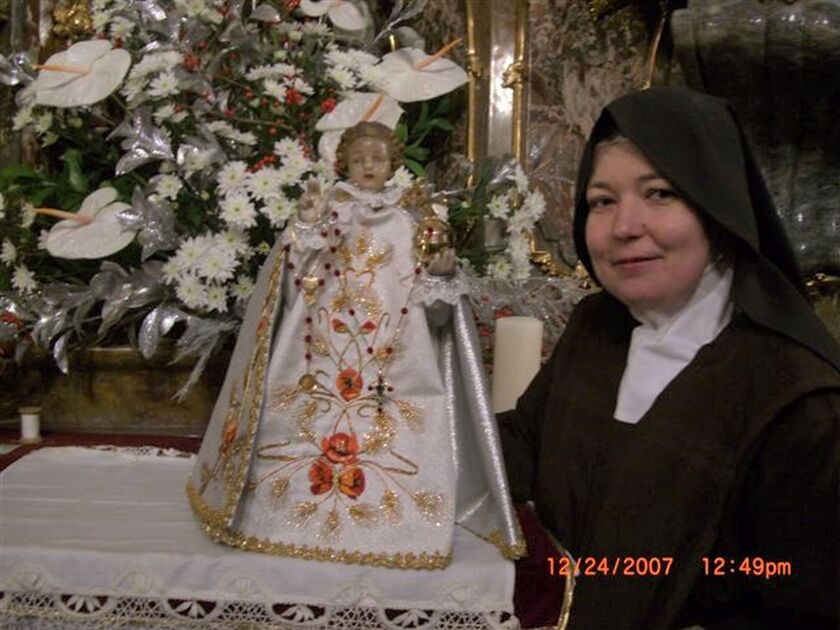
In that faraway church, the Discalced Carmelite nuns, dedicated to a life of poverty, regularly clean and dress the royal babe, changing its many donated robes, synchronizing them with the ecclesiastical calendar.
The contrasts of the infant Jesus—both lowly servant and high king—mirror in ways the soul journey of Narlock, a multi-talented artist who has donned both dirt and diamonds, entertained street people and celebrities, and restored hope in low places and beauty to high sacred ceilings.
“He’s made cheesecake for the pope (John Paul II), and Debbie Reynolds, and would personally deliver them,” Beck says. “It’s really unbelievable, the things he’s done.”
But it didn’t come without suffering. Following graduation, Narlock “spun out of the farm as fast as I could, rocks flying in all directions,” he says, “and I didn’t step foot in a church for the next several years.”
Living in Minneapolis and battling addiction, at one point, Narlock cried out to God in despair. “I remember coming home, looking up at the sky, bawling, and asking God why he’d abandoned me.”
He left nursing school, returned to the farm, and began a slow ascent back to God. “At the time, I really didn’t have a feeling of Christ in my heart,” he says, “but there was a definite draw.”
One day, Narlock, 20, walked into Shenanigans eatery in Grafton. “Maxine Twamley (the owner) took one look at me—a cast on my left hand, a long earring in my left ear, and my punk-rock hair—and should have just slammed the door.”
Instead, she offered him a job scrubbing floors and helping with food prep. It was the beginning of a 30-year culinary career that would open many future doors, both in North Dakota, and eventually, California and beyond.
Catering, coming back to Christ
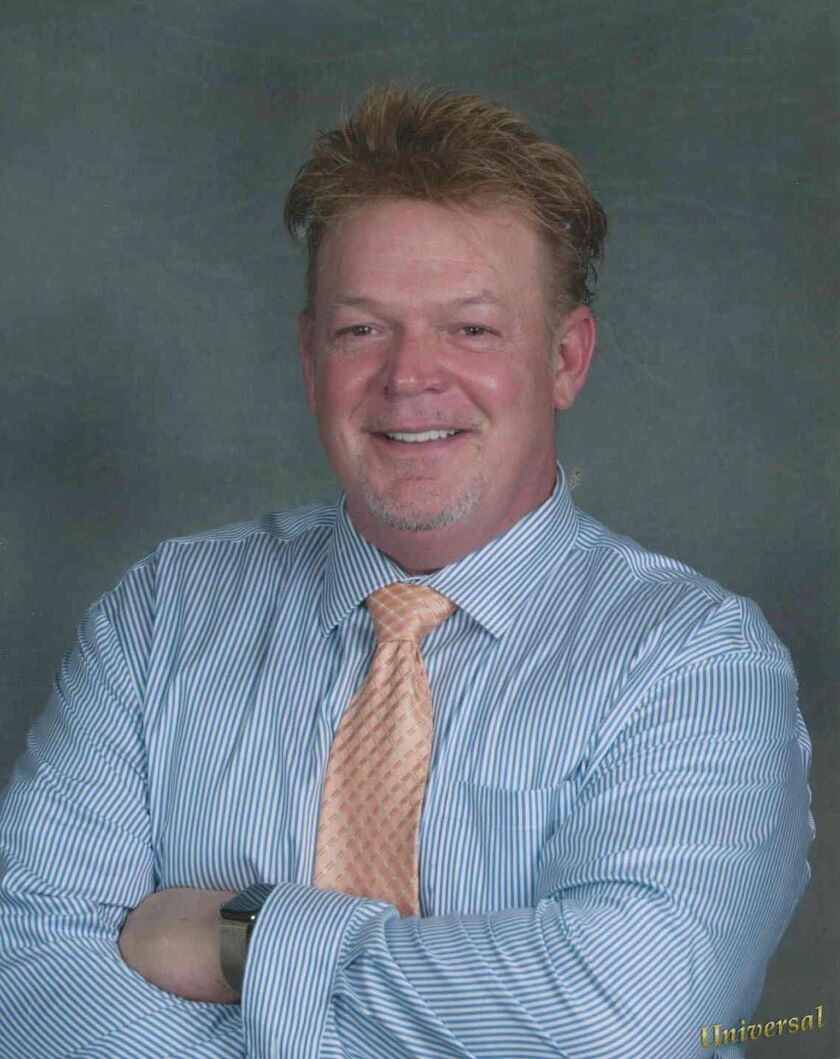
In his early 30s, Narlock began working weddings, opening the Touch of Magic catering business. But then the 1997 flood hit, and “wiped everyone out” in the area.
The following year, he started attending Mass with his father, mainly as a way to garner financial assistance. “It wasn’t for the right reasons,” he acknowledged, but something stirred—the Infant of Prague still in his heart. “I fell in love with Christ and the Church, again,” he says. “The connection I was looking for all along was Christ; I just didn’t have a clue.”
During the flood’s height, Narlock had escaped to California to fish, and met a manicurist who offered to repair his scratched-up hands so he could return to culinary duties. She also introduced him to actress Elizabeth Taylor.
He began making cheesecakes for Taylor and other celebrities, and eventually, full dinners, expanding his business and dividing his time between North Dakota and California. “Debbie Reynolds ended up becoming like a second mother to me.”
It was a busy life, but his commitment to Mass now firm, he’d leave early each day, sometimes the only car on the highway, seeking Christ. “And because of the love and the fire—I was now walking with the Lord—I started to see Christ in others.”
Narlock got an apartment in West Hollywood, and though troubled by the nightly disturbances of gunshots and helicopters, God roused his courage, he says, and soon, he was out giving cash to the needy on the streets. “I wasn’t afraid anymore. I started walking with people instead of judging them.”
After befriending a cardinal he’d met in North Dakota, Narlock made numerous trips to Rome, on invitation to cook for Pope John Paul II, including a cake for the 22nd anniversary of his pontificate.
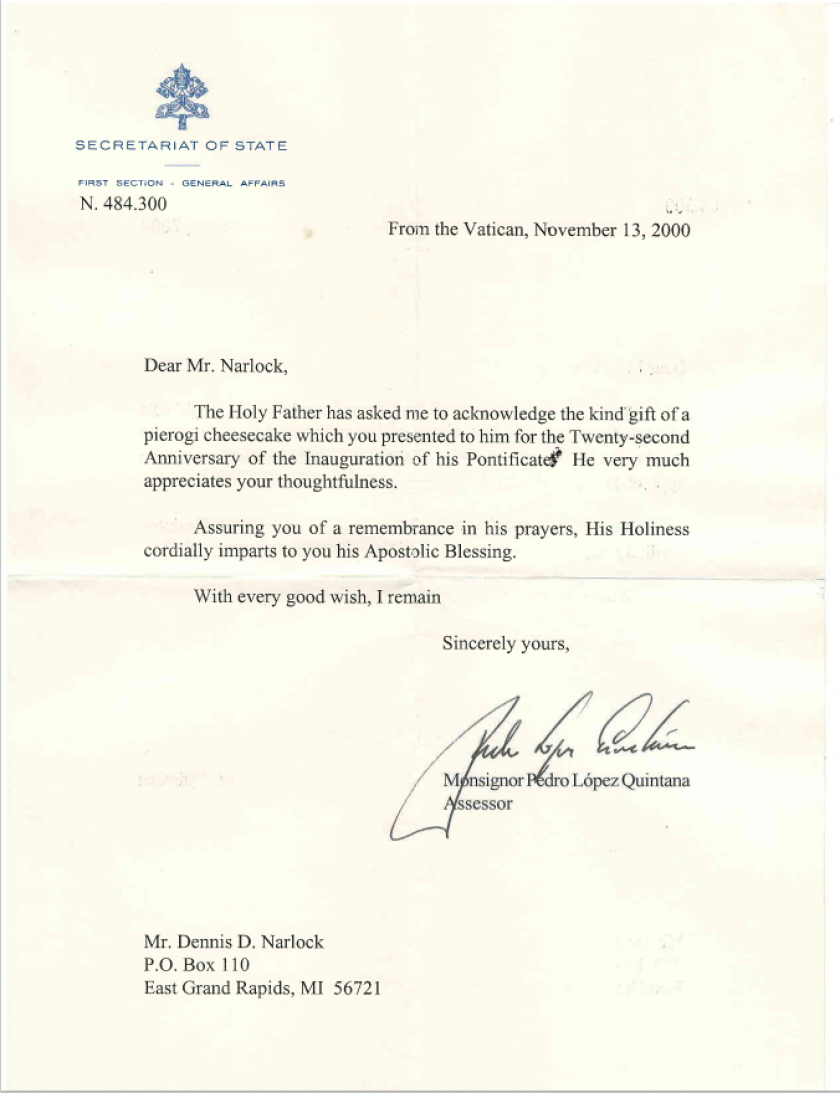
One visit there fell on the Feast of the Annunciation. As Narlock reflected on Jesus being conceived in Mary’s womb, he says, he began to yearn to conceive Christ in his heart, and soon, began detaching more from the world.
It was a powerful encounter with a homeless woman, however, that prompted Narlock to consider living a life of poverty for God. He sold his business, leaving behind diamonds, homes and other luxuries, to deepen his walk with Christ, and sharing him with others. “Whether it’s through my food or painting, it isn’t me,” he says. “It’s Christ in me.”
Shining up the sacred
For a period, Narlock thought he might be called to religious life. He spent time with a group of Franciscans discerning that possibility. But after several years, he realized God wanted to use his talents in another way. He started a business restoring religious art, bringing to life sacred objects that have grown dull and worn.
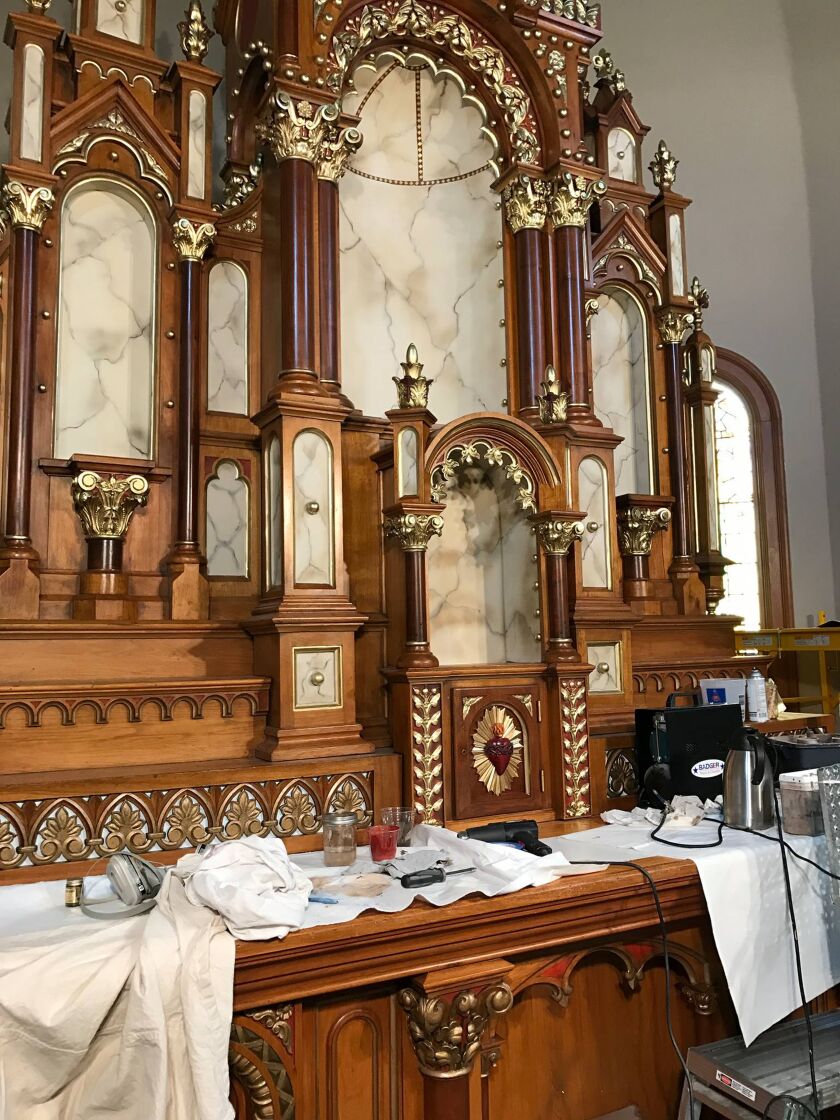
When Monsignor Mike Foltz, pastor of Sacred Heart Church in East Grand Forks, Minnesota, learned of Narlock’s refurbishing talent, he commissioned him to restore some pieces at his parish, including the crucifix. “He has a fine-tuned, keen insight, seeing things in ways others might overlook,” Foltz says, and an important appreciation for beauty.
Foltz also has leaned on Narlock to prepare a meal at his residence in the spring, raising money for the area’s Catholic school. “We auction off a “Supper with the Super (intendent),” Foltz says, “But I can’t cook, so Dennis has been doing the meals the last few years.”
“It’s very Eucharistic,” Foltz continues. “What happens at the altar at the church should be reflected at our dining-room table. And I think that’s Dennis’ theology. He puts so much care into it, making the table look so elegant, along with the presentation of the meal.”
All this, despite health challenges, Foltz notes. “I think he would say God has healed him of certain things so he can continue to do the work of God.”
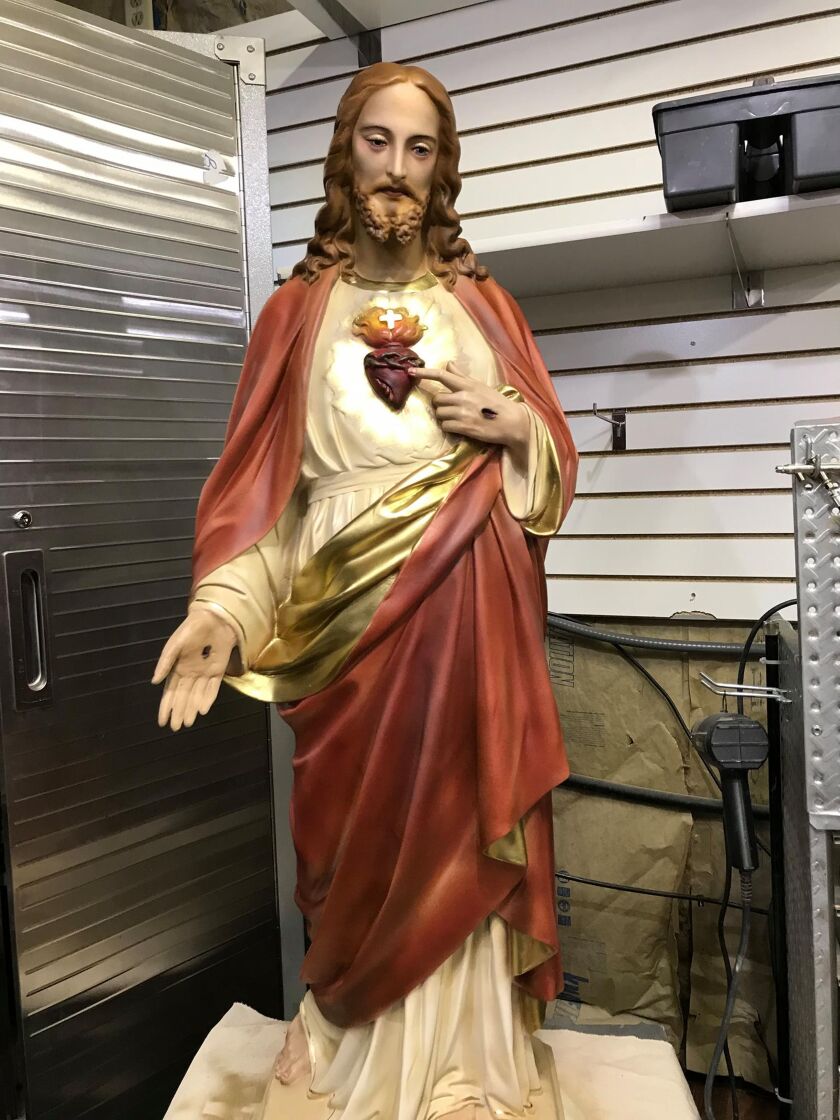
Not long ago, Narlock was on a scaffolding, placing angels on a church ceiling and reflecting on the brevity of life and importance of entrusting our lives to God. Later, he said, “I realize I’ve gotten away from my devotion to the Infant of Prague,” acknowledging a need to return his gaze.
A website dedicated to the statue notes that, for all its “majestic posture and regal attire, the little King of Prague is more striking for his outward expression of human littleness than by the impression of hidden greatness.”
The description melds with Narlock’s own discoveries. “This whole poverty idea was really about spiritual poverty,” he says. “(God) wanted me to realize I’m nothing without him, and I’m everything with him. It’s that simple.”
[For the sake of having a repository for my newspaper columns and articles, I reprint them here, with permission, a week after their run date. The preceding ran in The Forum newspaper on Dec. 23, 2022.]

Leave a Reply